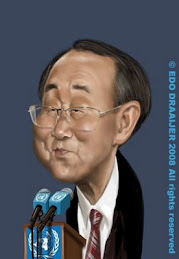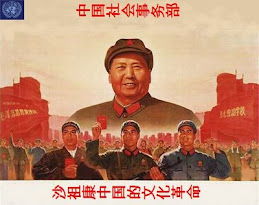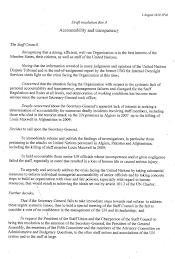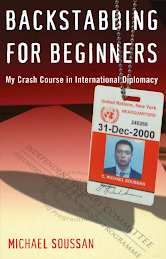

Tariq Rauf, second from left
The official is identified only by his Russian code name, ARTHUR, but other sources identified him as Tariq Rauf, 54, a Pakistani-born Canadian who is chief of verification and security-policy coordination at the International Atomic Energy Agency (IAEA).
The job “puts him in direct contact with both inspectors and countries around the globe,” a Canadian online magazine reported last year. “Rauf is responsible for ensuring IAEA scientists get into countries such as Iran and negotiating the access they need to completely verify the use of nuclear material.”
The allegations appear in “Comrade J: The Untold Secrets of Russia’s Master Spy in America After the End of the Cold War” by former Washington Post reporter Pete Earley, author of two previous books on Russian spying in the United States.
The book amounts to a blistering memoir by Sergei Tretyakov, a former top Russian intelligence operative stationed in New York and Canada during the 1990s, first with the communist-era KGB and then its successor, the SVR.
Rauf called Tretyakov’s allegation “nonsense.”
He had “never” worked “for any intel types whatsoever. I am a impartial loyal international civil servant,” he said by e-mail from the IAEA’s headquarters in Vienna on Friday.
But in the first of two telephone conversations earlier in the day, Rauf was far less dismissive, declining an opportunity to flatly deny the allegations. He refused to say whether he knew or had ever met Tretyakov, who worked under diplomatic cover.
“Comrade J” describes several other alleged Russian spies in Canada only by code name, but in such rich detail that it’s not hard to figure out who they are.
Tretyakov’s description of ARTHUR all but names Rauf as his spy.
“When Sergei had recruited ARTHUR [in 1990],” Earley writes, “he worked at the Canadian Centre for Arms Control,” a think tank for experts on nuclear weapons.
Later, ARTHUR was “a project director at the Center for Nonproliferation Studies, part of the Monterey Institute of International Studies, a California think tank,” he relates.
A few years later, when Tretyakov became deputy chief of Russian intelligence in New York, he renewed his relationship with ARTHUR, who had become “a U.N. senior verification expert,” who specialized in the clandestine weapons programs of “rogue states” such as Iran, Libya and his native Pakistan.
“I know that he is still employed at the agency and I have no reason to believe he has stopped working for Russian intelligence,” the one-time master spy says in the book.
“He hated America.”
Rauf’s résumé is identical to Tretyakov’s description of ARTHUR’S career. They are one and the same, according to multiple sources.
A former Russian diplomat and arms control specialist who knew Tretyakov well in New York, reviewed the description of ARTHUR and said it appeared to describe Rauf.
“The fingered Canadian guy, well, you know only too well who could theoretically fit this reference,” he said on condition of anonymity.
Another former Monterey arms expert, when asked whether Rauf might be the spy code-named ARTHUR, said, “Yes, the name you provided is correct.”
When contacted for this story, Rauf said a Canadian newspaper reporter had presented him with the same allegations days earlier.
He said he had not decided whether to contest the allegations in court.
Author Earley said he had examined Tretyakov’s records — photographs, e-mail, even a restaurant napkin on which ARTHUR scribbled notes about Ukrainian missiles — to back up every allegation.
“If they want to sue us, fine,” said Earley of all the Canadians that Tretyakov describes as spies. “We’ll just run Sergei up there with our stuff and see what happens.”






.jpg)























